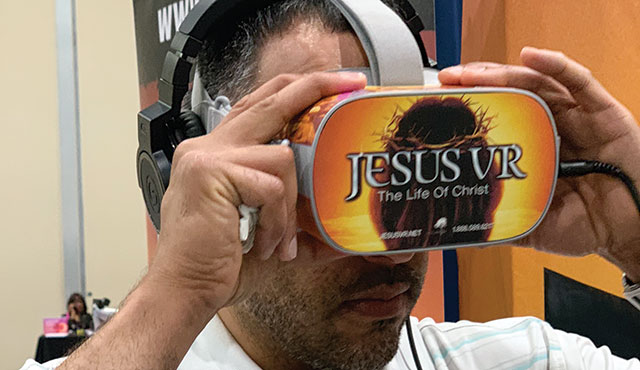The Spiritual Exercises of St. Ignatius of Loyola (1491-1556) is a spiritual journey by a participant or retreatant of four different levels, called “weeks.” The first level is about recognizing the eternal, endless love of God despite one’s sins and faults. The next three weeks all center around the life of Christ, with particular emphasis on the Passion, Death, and Resurrection. By the end of the “fourth week” of the Exercises, one is ready to live the “fifth week,” meaning the time going forward, as a renewed disciple of Christ in gratitude for His endless love and the many graces freely given.
The way St. Ignatius encourages those undergoing the Exercises is by two unique methods of prayer called Ignatian contemplation and meditation. These are not passive experiences wrapped up solely in one’s own thoughts. Rather, Ignatius asks for imaginative engagement with Scripture. This means when contemplating Jesus carrying the cross, for instance, to put yourself on the hot, dusty streets right alongside the people of Jerusalem and the Roman guards. What are you seeing? How is this affecting you? Or when Jesus is preaching the new law on the Sermon on the Mount, to place yourself as one of the disciples or regular people observing something wholly unique.
Through these methods of prayer, contemplation and meditation, Scripture and the Gospel leap off the pages from being just words in a book to a virtual reality with you as a character encountering Jesus in real time.
Jesus VR, an immersive film experience, realizes with the most advanced technology currently available what St. Ignatius encouraged 500 years ago. Comprised of vignettes depicting the birth of Jesus to His Ascension, Jesus VR utilizes virtual reality technology and drops the viewer directly into the familiar Gospel scenes in a new way. As Jesus sits before a crowd, preaching His message of love of God and neighbor, you sit there with the others, hearing the daytime crickets, the sound of sandals crunching sand, and look around as those around you do in awe at the simple but radical figure and message of Christ.
Jesus VR was executive produced by Enzo Sisti, an Italian producer who is credited as an executive producer on Mel Gibson’s The Passion of the Christ (2004). Indeed, Jesus VR recycled many of the Matera, Italy locations Gibson employed for his film, and here the rustic setting effectively evokes first century Palestine. And with its restrained depiction of violence, Jesus VR can be seen as an alternative to The Passion. Younger audiences will find viewing the film via a virtual reality headset appealing, but with a runtime of 80 minutes, the weight of the device may take its toll and distract from engaging with the content, which still yet manages to movingly convey the life of Christ by film’s end.
While the film was shot in 360° 4K video resolution, allowing viewers to observe the scene from any perspective, including an eye-popping sequence when Jesus is tempted by Satan, the viewing experience could be marred by occasional choppy playback and grainy imagery, part of the growing pains of new technology. The production design value resembles the Italian neorealist films of post-World War II Italy, with its barebones settings and unrecognizable actors. This was a style Pier Paolo Pasolini consciously evoked with his stripped-down masterpiece on the life of Christ, The Gospel of According to St. Matthew (1964). This connection is also evident in Jesus VR’s non-narrative structure, arranged as a series of vignettes with each sequence fading to black, reminiscent of Roberto Rossellini’s Rome, Open City (1945) and Vittorio de Sica’s Bicycle Thieves (1948).
Jesus VR aims to make the earthly life of Jesus accessible to modern audiences, wholly informed as they are by the addictive power of technology. While St. Ignatius and the saints sought to orient their lives the way Jesus and his Jewish brethren did, by the cycle of prayer, Jesus VR comes at a time when even believers are subsumed by the constant demands and distractions of things other than prayer.
In this way, it is appropriate that the first experience for many in the virtual reality realm might be by experiencing the greatest story ever told, and to find in this interactive experience not a technical gimmick, but a new way of practicing Ignatian contemplation and meditation, a new way of prayer.

